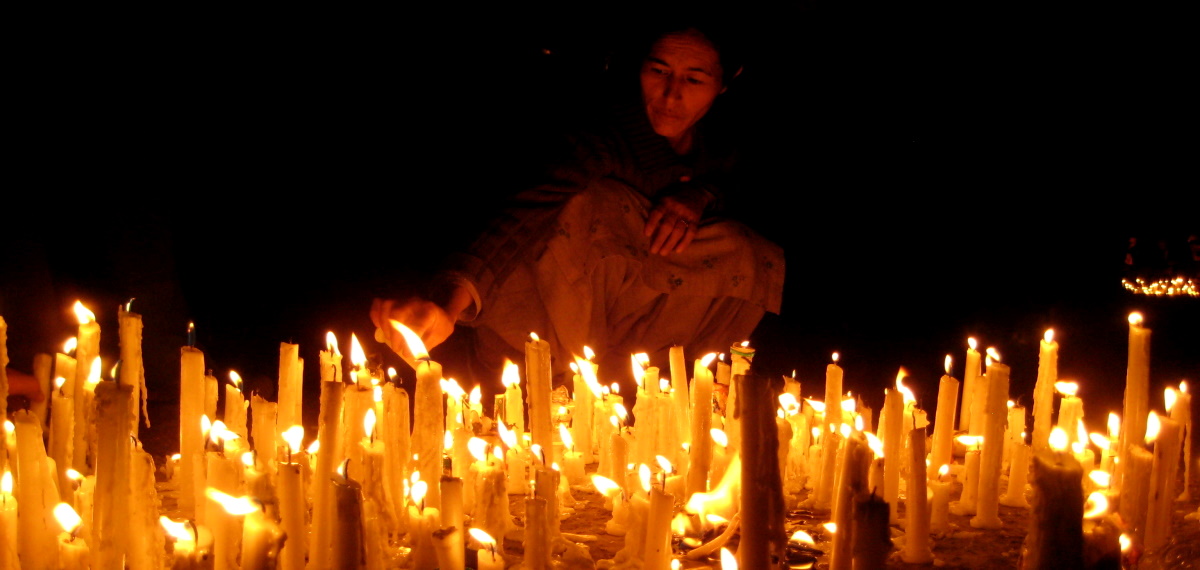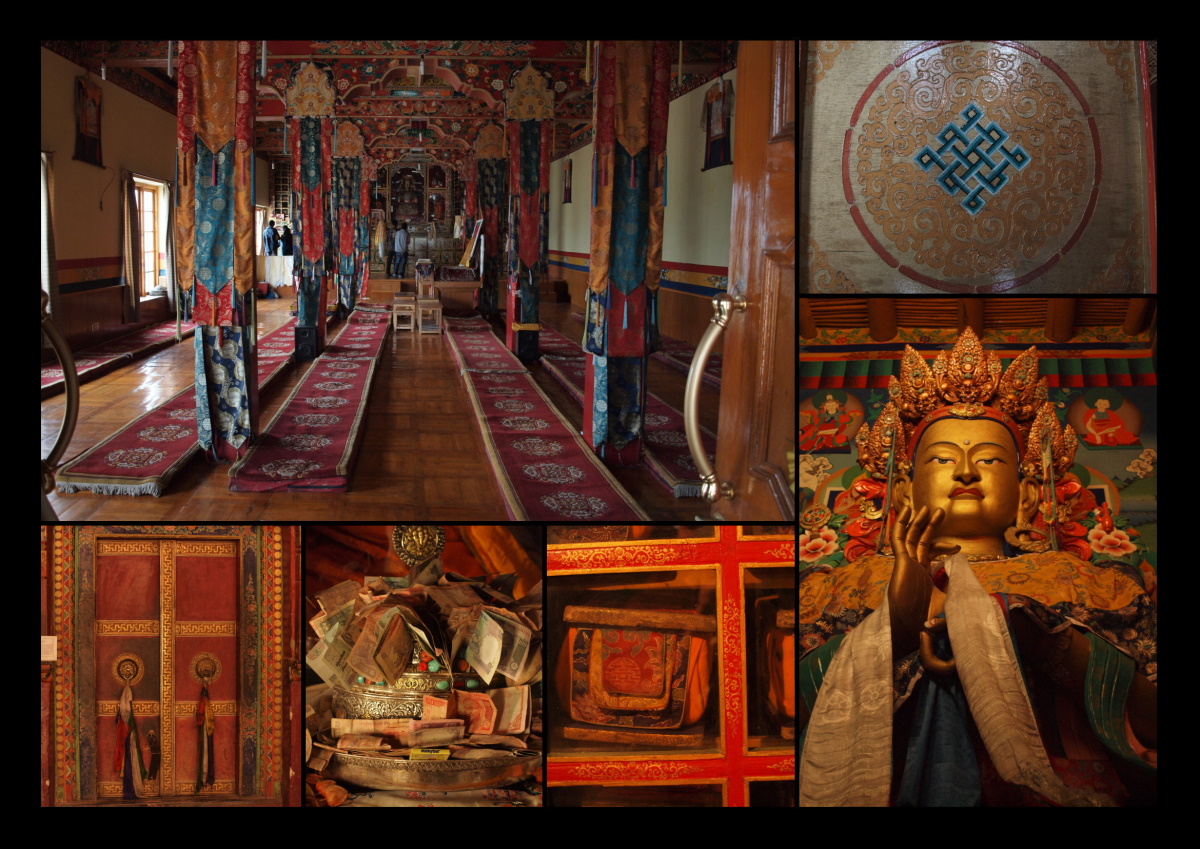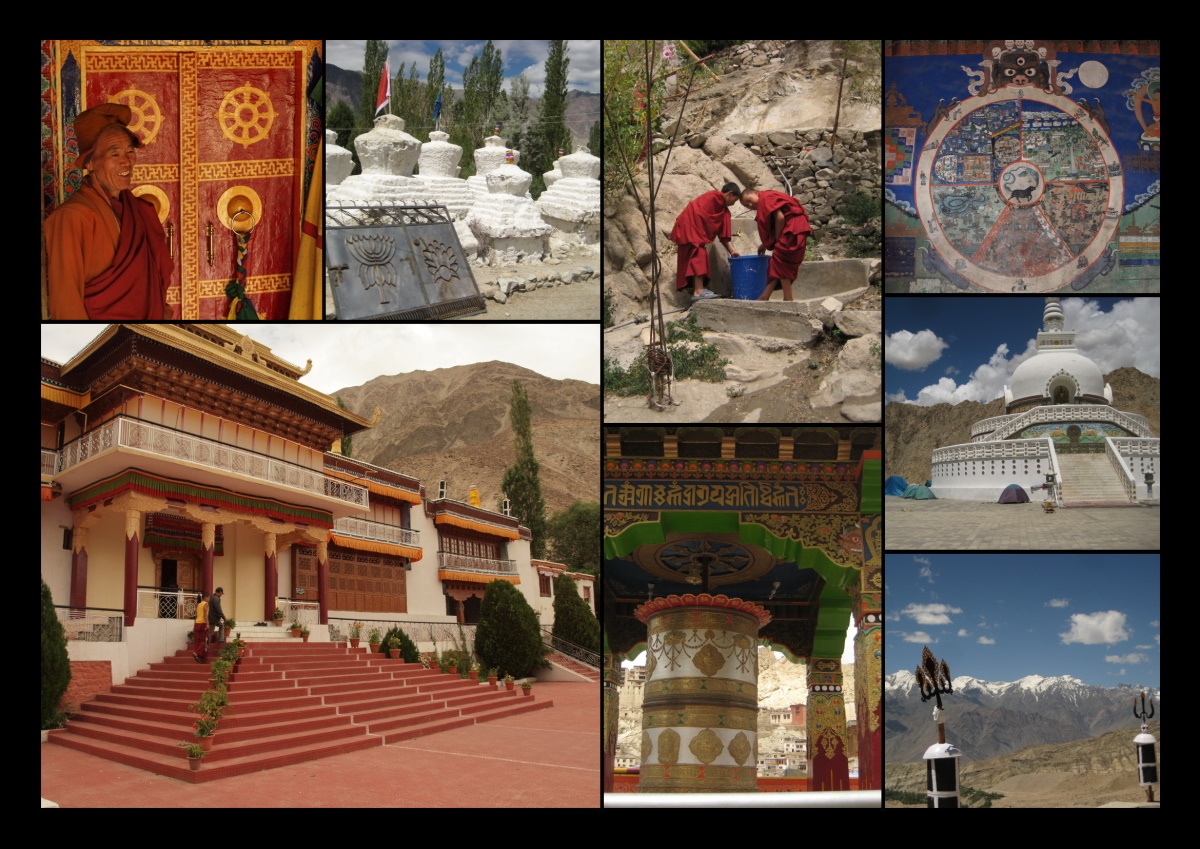Nirvana, Bodhisattvas and the upcoming universal ages
Buddhist kingdoms of Ladakh, Zanskar and Nubra Valley
After the breathtaking flight from Delhi to Leh, as we first stepped our feet onto this holy land, we were not oblivious of the fact, that we were entering the cradle of Buddhism. It is said, that starting from the region of Ladakh, the gentle doctrine was spread into the different parts of Tibet (and not the other way round). Nowadays Ladakh is one of the last regions in which the tibetan Buddhism is still alive.

When we arrived in Leh, there was a book lying in our room: 'Teachings on love' written by Thich Nhat Hanh, an important lama. In his book he
describes the teachings of Buddha about love.
That was the perfect book to read in the peaceful region of Ladakh. One short excerpt from the end of the book:
„ Please learn and practise the art of a regardful life, the art of beeing happy und to endow happiness to other people.
That is the meditation of love. That means to live your life deep in the present moment.
We count on you.“
One week later, we were trekking the Zanskar trail. Even here you could feel the Buddhism everywhere. Our guide gave me a book called
„The life of Milarepa - Tibet's great Yogi“ by Lobzang Jiraka 1962, a benchmark of Buddhism.
It describes the different concepts and points out the relationship between teacher and disciple. In that book Milarepa is disciple of
Marpa who, at that time, was the most well known spiritual lama.
Now I had read two benchmarks of Buddhism and our cultural guide book and I had to admit, that I didn't know anything about Buddhism.
Every monastery we went to, came up with another emphasis of Buddhism. Also the deities and spirits we encountered were different.

But the main conclusion was the same: The goal of our earthly life is the relief from endless suffering of beeing captivated to the wheel
of reincarnation for all existence. Relief can come with enlightenment, the state of absolut understanding the real nature of things.

The great gurus (like Marpa and Milarepa) absorbed countless local tibetan deities and spirits into the new doctrine.
And at the end they disected the univers into a hierarchy of deities by using a overall synthesis. There are good and bad spirits of gentle
or gaunt character. And there are Buddhas, who accept Nirvana after ages, which means, that their individual soul unites with the cosmic
soul.
In contrast the Bodhisattvas embody compassion and are infused with enlightenment. However they relinquish Nirvana until the last soul is
reliefed by their support.
Furthermore there is not only one Buddha. With the decline of the cult of Dhyani, the concept of the thousand ages became more and more
important, each one represented by one Buddha. Shakyamuni, the Buddha of the past, is located at fourth position.
There are 996 following Buddhas, of which Maitreya, the Buddha of the upcoming universal age, is pictured most.
We were able to marvcel at one in Diskit (Nubra Valley). This statue was revealed by Dalai Lama only one week before.

May Maitreya satisfy the wish I have: May the region keep its breathtaking beauty. May the people keep hold of their religion and of their mentality, which a traveller almost 300 years ago described as kindful and happy.
